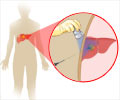
‘A new theranostic strategy for precise tumor diagnosis of tumors has been developed. In this therapy, molecules enter into the tumor and provide diagnosis and guidance for therapy through photoacoustic imaging.’
Tweet it Now
Ni points out, "Unlike traditional chemotherapy, the designed intelligent Ox-POM clusters, obtained from an easy, fast, and large-scale synthesis process, will only cause damage in tumor areas but not to the normal tissues and organs. Importantly, like most clinical imaging agents, these nanoclusters are mainly excreted through the kidneys, making them highly biocompatible and reducing the potential toxic effects on patients." Tumor-bearing mice were tested with this novel system of redox-activated PA imaging-guided photothermal therapy (PTT). Redox is short for reduction-oxidation reaction. In this study, the ultra-small Ox-POM clusters accumulate in the tumor and are reduced in the tumor microenvironment. They then get protonated and self-assemble into much larger nanoparticles that are near-infrared (NIR) absorptive. Systematic in vitro and in vivo experiments were performed to evaluate their bioresponsive and theranostic capability.
Results from positron emission tomography (PET) imaging with zirconium-89-labeled Ox-POM showed these clusters could escape from recognition by the liver and spleen and were mainly excreted through the kidneys, which is highly desirable for reducing potential toxic effects. Studies in the tumor-bearing mice showed that the PA signal was detected in the tumors as early as one hour post-injection. Under laser irradiation, the temperature of the tumor rapidly increased, reaching above 40 °C in 30 seconds and reaching 52 °C in five minutes; the tumor growth was eliminated without subsequent recurrence for a prolonged period of up to 2 months, whereas the control groups demonstrated rapid tumor growth.
Ni states, "As a proof-of-concept, our findings explore a new strategy for precise tumor diagnosis and therapy, which is also expected to establish a new class of theranostic agents based on clusters, bridging the conventional concepts of "molecule" and "nano" in the bioimaging field." He adds, "These are exciting smart nanomaterials (target and/or respond to cancer and efficiently clear from the body) for potential clinical translation. On-demand tumor diagnosis and therapy triggered by physiological microenvironment characteristics of tumors can simultaneously reduce the damage of anticancer agents to normal organs/tissues and improve therapeutic efficacy."
Source-Eurekalert











